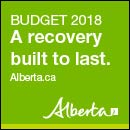- News Front Page
- Uncategorized
- Headline News
- Filipino Calgarian
- Business
- Pinoy Stories
- Community News
- Publisher's Note
- The Main Ingredient
- Views and Opinions
- Maikling Kwento
- Alberta News
- OFW – Month
- Travel News
- Health and Lifestyle
- Pinoy Toons
- Pinoy Spirit
- Entertainment
- The Philippine Lawyer
- Horoscope
- Greetings
- About Us
- Greetings From the Prime Minister
- Greetings from the President of the Philippines
- Greetings from the Premier of Alberta
- Greetings from the Mayor of Calgary
- Advertise With Us
- Disclaimer
- Subscription
Publisher's Note
- Publisher’s Note
 It was 22 years ago when I arrived in Canada and chose Calgary, Alberta to be my home. Leaving my family and friends behind, it was a new adventure for me to be in a new country without knowing anyone. That was the time I looked for a Filipino community paper and never found any, [...]
It was 22 years ago when I arrived in Canada and chose Calgary, Alberta to be my home. Leaving my family and friends behind, it was a new adventure for me to be in a new country without knowing anyone. That was the time I looked for a Filipino community paper and never found any, [...]
Visitors to Pinoytimes
Page added on April 30, 2013
DEPRESSION AND THE ALBERTA MALE
Men are often more reluctant to seek help for depression. Here’s how you can get help for yourself or someone you know
As overwhelming as depression can be, the rules of engagement are simple: recognize the problem and take action. But, for men in particular, it’s not that simple. As Neil Harris, a coordinator for Alberta Health Services’ Men at Risk program in Lloydminster, explains, “Men will often try to hide their depression from others. Men have been socialized to be strong, to be in control and if they are having difficulties to just ‘cowboy up.’ Where a woman will talk to someone or seek help, a man doesn’t want to be seen as weak or unable to solve his own problems. One way of putting it is women get sad and men get mad.”
A 2007 literature review by the Alberta Mental Health Board — now part of AHS — found depressed men can display irritability, body pain and cognitive difficulties. Other symptoms can include reduced ability to cope with stress, anti-social behaviour, low impulse control, abuse and anger.
Men may also deny they have a problem, turn to drugs or alcohol, throw themselves into work to avoid dealing with the issue, act out aggressively or indulge in self-destructive behaviour.
“Unfortunately, all of these behaviours make it harder for men to get diagnosed and treated, and can actually make the depression worse,” says Harris.
This is a real concern because “men are four times more likely to die by suicide than women,” Harris emphasizes.
So what’s a man’s man to do?
Realizing you’re not alone — that depression is a common condition — is a significant first step, advises Barbara Campbell, a coordinator for the Men at Risk program in Grande Prairie. She compares the affliction with treating a heart problem: you wouldn’t resist seeing a specialist if you developed chest pains. Mental health issues are no different.
Start with booking a check-up with your doctor, and talk to someone you trust — your spouse, a family member or close friend. Campbell also suggests eliminating alcohol or drugs, getting enough sleep and finding an exercise or activity that helps you relax.
One of the pillars of the Men at Risk program is the reality that, as devastating as depression can be, the good news is, in most cases, it’s treatable.
If a man you know appears to be suffering from depression, you can help, too.
“The most important thing is to be understanding and supportive,” says Campbell. “Talk with him about what he’s feeling and remind him that depression is treatable and doesn’t mean he’s weak or flawed in any way. Comments like ’snap out of it’ are not helpful. Your support and gentle pushing could be enough to get the man in your life on the path toward recovery.”
If professional help is needed, help him get it. Take the initiative and find out what resources are available. Take him there to get help.
“Most importantly, be patient,” says Harris. “Recovering from depression will take time.”
Signs and symptoms of depression
Many of the symptoms of depression are similar for men, women and children.
- General aches and pains, such as headache, backache, blurred vision and indigestion
- Withdrawal from people
- Loss of interest or enjoyment in activities and things that were once stimulating
- Change in sleeping patterns or appetite
- Decreased ability to make decisions or concentrate
- Difficulty completing daily tasks, finishing projects or delivering on promises
- Feelings of worthlessness, hopelessness, loneliness or helplessness
- Feeling tired and worn down
- Thoughts of death or suicide.
If you experience any of these symptoms for more than two weeks, or if you feel any of these symptoms are interfering with your life, see your doctor right away.
A made-in-Alberta resource for depressed men
The Men at Risk program is based in three locations. In Camrose and Lloydminster it is an Alberta Health Services program; in Grande Prairie it is available through the Suicide Prevention Resource Centre, where it originated in 1999. Men at Risk targets men working in trades, industry and agriculture. Its main goal is to help people recognize the early signs of stress, depression and risks for suicide, and to learn what to say and do with someone at risk. The program also delivers information and ideas for healthy ways of coping through volunteers sharing personal stories.
Camrose 780-679-1241
Grande Prairie 780-539-0210, sp-rc.ca/mar.html
Lloydminster 306-825-5523
Mental Health Help Line (Alberta): 1-877-303-2642
Staffed 24/7 by health professionals, the Mental Health Help Line provides: crisis intervention, information on Mental Health programs and services, and referral to other agencies where appropriate. This confidential, anonymous service is provided by Health Link Alberta and is available to all Albertans. Have access to interpretation services.
Access Mental Health, for information and service referrals Calgary(M-F 8am-5pm) 403-943-1500
Distress Centre Calgary 24 hours Men’s Line: 403-266-HELP (4357)
The Support Network Distress 24 hours Line Edmonton: 780-482-HELP(4357) or 1-800-232-7288
To learn more about other support and programs for depression, contact your doctor or speak to a nurse 24 hours a day, seven days a week by calling: Health Link Alberta toll free at 1-866-408-LINK (5465). Mandarin Health Link Alberta in Calgary at 403-943-1554, Cantonese Health Link Alberta in Calgary at 403-943-1556.
Source: Written by Colleen Seto, Apple magazine
Alberta Health Services website, www.albertahealthservices.ca
If you want to read any of the previous ‘Road to Healthy Living’ series articles, please go to
http://www.albertahealthservices.ca/4248.asp and get health information in your own language
RELATED STORIES
LATEST HEADLINES
- ISKWELAHANG PILIPINO (IP) RONDALLA OF BOSTON WINS THE HEARTS OF CALGARIANS
- Pinay doctor joins Medicus Family Clinic and Pharmacy
- Multicultural Ethnic Media round table with Minister of Finance Joe Ceci together with Minister of Social Services Irfan Sabir
- Trans Mountain Pipeline keeps Canada working
- Facilitating travel to Canada while keeping Canadians safe
COMMUNITY NEWS
 A new way forward for some immigration application processing times
A new way forward for some immigration application processing times Calgary Stampede 2018 Poster
Calgary Stampede 2018 Poster Alberta celebrates first Philippine Heritage Month
Alberta celebrates first Philippine Heritage Month UPAAA Welcomes New Philippine Consul General
UPAAA Welcomes New Philippine Consul GeneralPINOY STORIES
 Duterte signs National ID System Act
Duterte signs National ID System Act- Holy Week practices in the Philippines
PINOY SPIRIT
HAVE YOUR SAY
Lorem ipsum dolor sit amet, consectetur adipiscing elit, dolor sit ipsum.PROMOTIONAL BLOCK
Lorem ipsum dolor sit amet, consectetur adipiscing elit, dolor sit ipsum.TRAVEL NEWS
PINOY TOONS
Tags
Archives

















